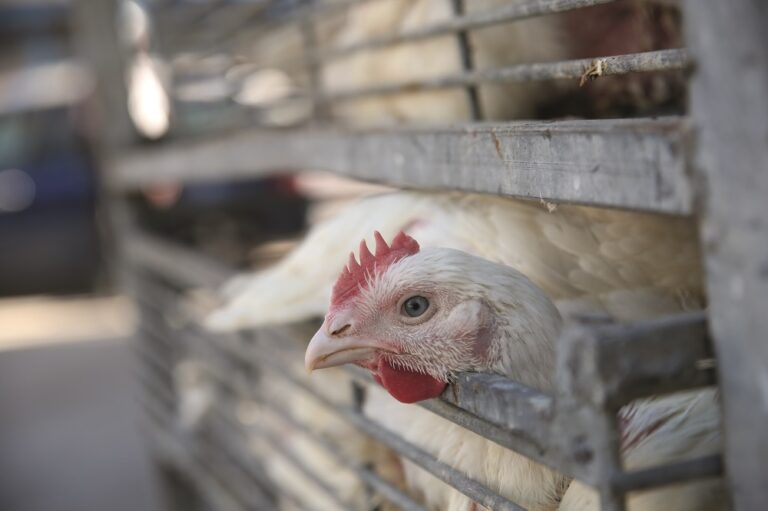Defra has published its proposals for new rules about transporting animals, including poultry, which are likely to have significant implications for the industry. The Welfare in Transport proposals include measures to ban the movement of poultry when the outside temperature is below 5°C or above 25°C. The rules will also impose a maximum journey time of four hours, but following a consultation, this limit will now not include vehicle loading and unloading times.
The Government said it had listened to early feedback from industry and will now work with the farming sector and welfare groups to develop these proposals. Currently no timescale has been published for implementing the plans.
Richard Griffiths, British Poultry Council chief executive, said he had big concerns. “This is going to cause difficulties and we are assessing the extent of the problem now. The government is indulging in ideological fancies rather than bigger picture of making food affordable and accessible.”
Tom Wornham, chair of the NFU Poultry board also expressed his concerns. “It is clear the government has not properly thought out or is able to scientifically justify many of these proposals. We are not seeing the objective proof that there is clear benefit for animal welfare in a good number of the proposals that are being taken forward.”
He said Defra had used evidence from over 20 years ago which did not reflect modern farming practices, and the sector already has effective protocols to manage bird welfare during transport. He welcomed the exclusion of loading and unloading from the proposed journey time for broilers. To do otherwise could have led to unintended consequences such as rushing when handling the birds or driving in order to meet the deadlines, he said.
However, the four-hour time limit will still cause disruption for producers and processors. “There are also currently no contingency plans for instances, such as disruption to processing plants, that may make four-hour journey times unviable,” said Wornham. “If a factory is disrupted by, for example, COVID-19, extreme weather or a breakdown, producers must be able to transport their birds to the next available processing plant without repercussions, or compromise bird welfare through protracted government authorisations to extend the journey.”
Another major area of concern is the proposal to prohibit all poultry journeys when the outside temperature is lower than 5°C or higher than 25°C. “This proposal could force the whole industry down the route of thermoregulated vehicles, which would require enormous investment and would take years for the industry to implement,” said Wornham. He urged the government to carry out a full impact assessment before introducing any new rules.
In a statement, Environment Secretary George Eustice said: “We have listened to the concerns raised relating to our proposed changes to transport regulations and have made changes to address these. We will continue to work with industry on the remaining details.”
The new rules
24 hours for chicks
A maximum journey time of 24 hours for day old chicks will be introduced. Evidence provided in responses to the consultation indicated very high survival rates of chicks beyond the proposed maximum journey time of 21 hours. The government said it valued the importance of the global trade of breeding stock to facilitate improved genetic diversity and, where welfare during transport can be ensured, export journeys of recently hatched chicks longer than 24 hours may be permitted if additional criteria are met.
External temperature of 5°C-25°C
For poultry journeys, Defra has proposed the introduction of a permitted external temperature range of 5°C to 25°C. In the consultation veterinary representatives said extreme temperatures have a severe effect on poultry mortality, the government said therefore this to was a “proportionate and sensible approach”.
“We appreciate that thermoregulated vehicles are currently not widely in use in the sector,” the proposals state. “Longer term however, the government is clear that the industry should aim to operate within the agreed external temperature range or use thermo-regulated vehicles. During our further work with stakeholders we will agree what suitable mitigations may be taken in the short term, and on the longer-term approach.”
Broilers
A maximum journey time of four hours for broiler chickens, excluding the time taken for loading and unloading. “By excluding loading and unloading time, we aim to remove the risk of potential welfare issues arising from rushed loading and unloading to meet journey time requirements,” Defra said. “We believe this is a balanced approach, which takes onboard the industry’s concerns about the impacts on existing journeys whilst addressing the scientific evidence on welfare risks and mortality rates for broilers on journeys longer than four hours.”

Previous ArticlePoultry Business – September 2021
Chloe Ryan
Editor of Poultry Business, Chloe has spent the past decade writing about the food industry from farming, through manufacturing, retail and foodservice. When not working, dog walking and reading biographies are her favourite hobbies.

